The fact that Custer had a Last Stand at Little Bighorn is known to most people but the facts behind it are not. I last saw Little Bighorn from a Greyhound bus in 1970 when I was travelling down the adjacent I90 road on my way to Chicago and then Indianapolis. Little did I realise then that I would be visiting it 43 years later with the person I was on the way to visiting when I was on the bus. If this ramble means nothing to you, more will be revealed in a week’s time.
Little Bighorn is a National Park Service Site
and perhaps is not quite as well organised as others we have been to. Never-the-less, we managed to piece together what had happened at the battle by listening to various accounts from Rangers and Indian guides there. Those wanting to get an understanding of the battle should read either Wikipedia here or the National Parks Service here.
Although the Native American Indians won the battle, it was very much of a pyrrhic victory because it was the start of the end of their freedom and way of life.
Why the battle happened is complicated but can be summarised into the above phrase.
The American troops were defeated because they were ill prepared, were divided in their leadership and Custer perhaps had an arrogant view of his own ability.
The battle site itself is very interesting because you can easily imagine and understand how the various battling parties moved
around the landscape. It is also one of the very few battlefields where the exact spot where each combatant fell and died is marked with a stone
such as these marker stones above recording two American soldiers
or this one recording two American Indians
or the actual site of the “Last Stand”
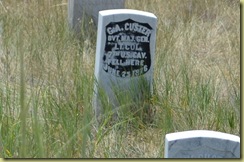
and the death spot of Custer himself (distinguished from the others by having a black marker).
All of the American dead are recorded onto a single memorial although many of the bodies are buried elsewhere in the US.
The American Indian dead and their participation in the battle has recently been recorded by a rather striking piece of artwork and some accompanying explanatory information.
Devils Tower
If you have seen the film “Close Encounters of the 3rd Kind” then you will have seen Devils Tower. Because it was on our way to Deadwood City where we were going to see a Rodeo, we called in and walked around it and attended a very good Ranger talk on the history of the tower.
On the way there, we drove across 200 miles or more of Montana grassland and hills which looked just how we imagined it would
and had numerous strange remains of the past on it such as this large wooden tepee in the town of Busby known as the Moncure Tipi in Busby which is now recorded as an official historic building and was used in the 1930s as a site for tribal give-away ceremonies and dances.
or these wrecks of houses by the side of the original
settlers road (now some distance away from the main road).
There is a sequence in Close Encounters where they are looking for a first sighting of the Tower and it was exactly like that for us. We knew we were close and the road signs kept telling us that but we could not see this massive tower anywhere.
And then suddenly we saw it peeping over the horizon
and obviously it got larger and larger as we approached.
until we were there.
You can walk around it (which we did)
and it is a remarkable edifice which gives you a really good feeling that it is a special place just like Uluru in Australia.
The fact that the tower has religious significance to the Native Americans does not of course stop people climbing
it and they say it takes about 6 hours to climb to the top and 1 hour to rappel down. People have also parachuted on to the top (as in 1941 when having landed, he realised he did not have a plan for getting down and it took 6 days for him to be rescued).
The geology of its formation is most interesting. And the folklore stories of its creation are equally interesting
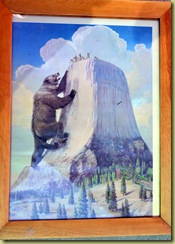 such as that illustrated by this painting which was in the Park office.
such as that illustrated by this painting which was in the Park office.
“Eight children were there at play, seven sisters and their brother. Suddenly the boy was struck dumb; he trembled and began to run upon his hands a feet. His fingers became claws, and his body was covered with fur. Directly there was a bear where the boy had been. The sisters were terrified; they ran and the bear came after them. They came to the stump of a great tree and the tree spoke to them. It bade them climb upon it and as they did so, it began to rise into the air. The bear came to kill them but they were just beyond its reach. It reared against the tree and scored the bark all around with its claws. The seven sisters were born into the sky and they became the stars of the Big Dipper".
A further embellishment of the story explains why bears now how no tail and small ears unlike the original bear in the illustration above.
The countryside around the tower is very green and fertile.
and much lived in by animals such as this
prairie dog which is one of a large colony we saw by the side of the road enjoying the sunshine and totally unafraid of people stopping to take its photograph.
The Vore Buffalo Jump
A surprise discovery on our way to Deadwood was the Vore Buffalo Jump. Buffalo were an essential element of survival to the plains Indian and one method of killing them was to force them to stampede and fall over a cliff. Then if they will still alive at the bottom of the cliff, they would be killed and turned into food and many other things. In fact there were few parts of a Bison / Buffalo which were not used for something.
This Buffalo Jump is a large sinkhole (as against a high cliff which is another method) 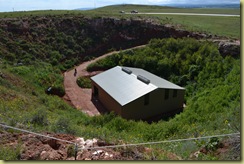
into which thousands of Buffalo fell to their deaths over a period of a couple of hundred years dating from the 1500s.
In the bottom of the hole is an archaeological dig which is protected by a large hut.
The dig is uncovering successive layers of Buffalo bones,
and above is a picture of six different layers of bones.
Bison have a lot of bones and they are not attempting to
reconstruct individual bison but to determine how they were killed (arrow heads are a frequent find) and to date the bison and the layers to provide information about what happened and when.
And now on to nearby Deadwood City.
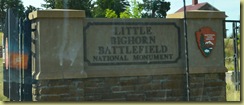
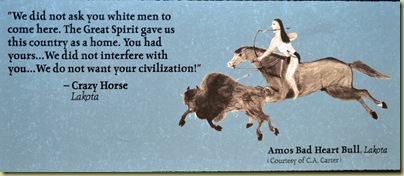
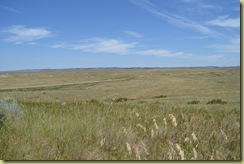

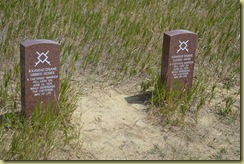
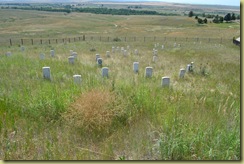
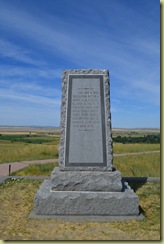
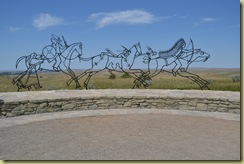
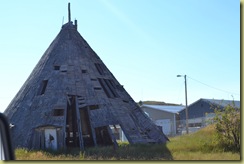
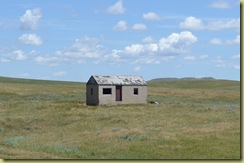
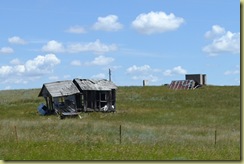
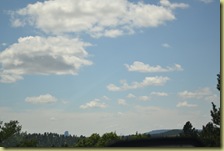

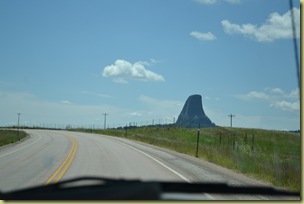
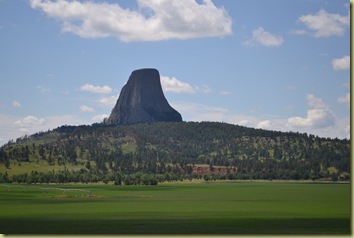
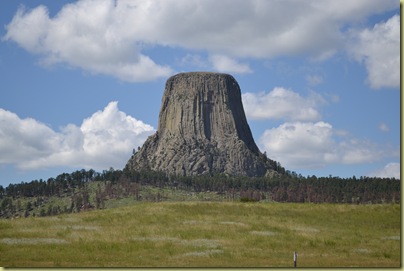
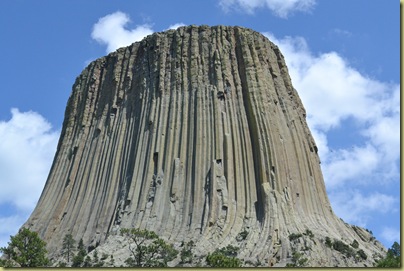

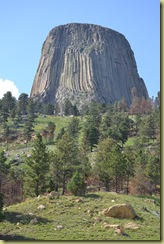
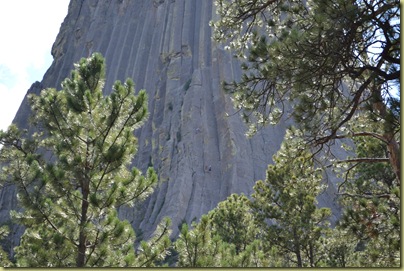
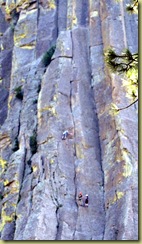
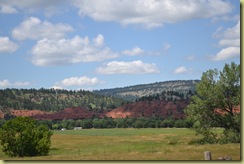
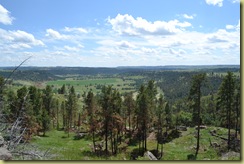
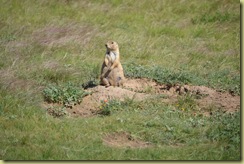

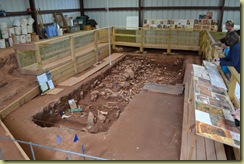
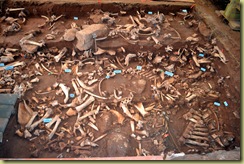
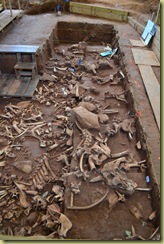
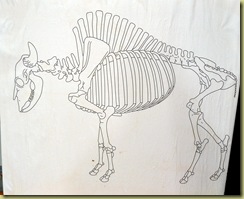
No comments:
Post a Comment